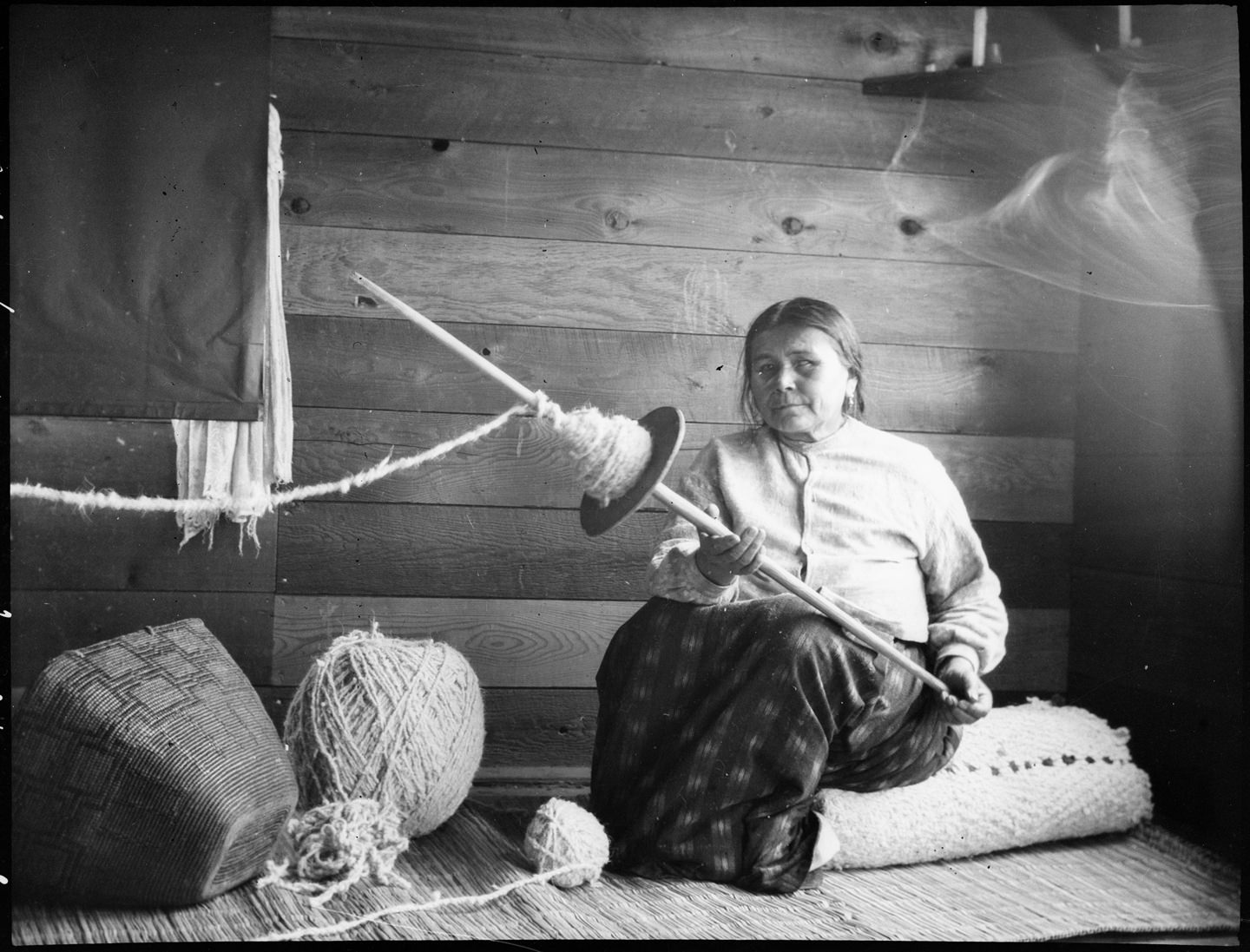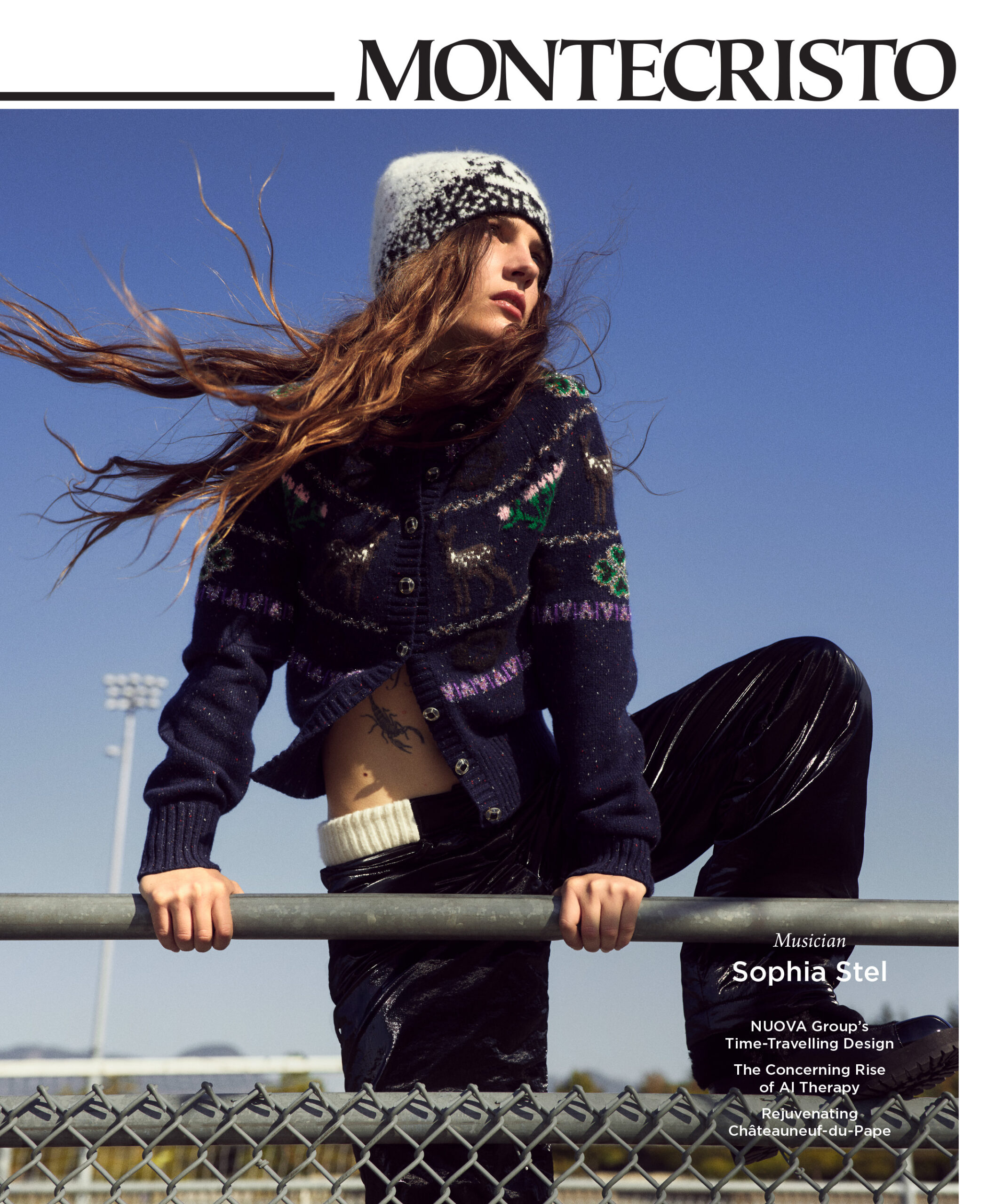Excerpt from The Teachings of Mutton: A Coast Salish Woolly Dog by Liz Hammond-Kaarremaa (Harbour Publishing, 2025). Edited by the author for length.
In front of me, like a steel wall, is an imposing row of six-foot-high metal storage cabinets protecting the past from the present. Somewhere within this fortress an ancient breed of dog is held in one of the drawers. It is 2012, and I am in the basement of a storage facility at the Smithsonian Institution’s National Museum of Natural History in Washington, DC. The windowless room seems enormous, filled with rows and rows of metal cabinets, much like a library with its stacks of shelves.
I could never have found my way into this maze of cabinets and drawers by myself, but standing next to me is Suzanne Peurach, my underground guide and collections manager of mammals. We are about to open a drawer and look at one of the treasures—the pelt of a Coast Salish Woolly Dog.
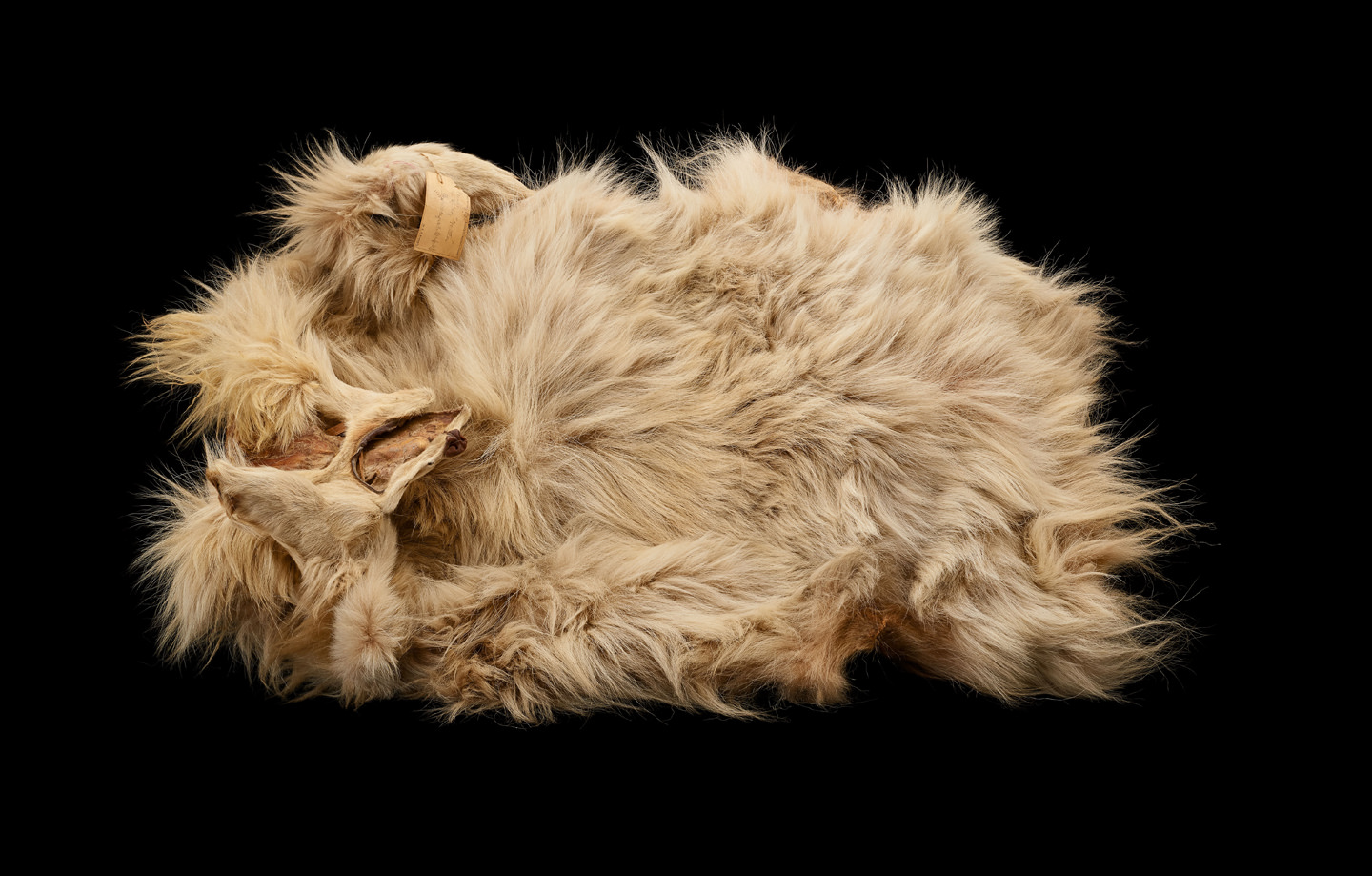
The 160-year-old pelt of the woolly dog “Mutton” in the Smithsonian’s collection. Photo credit: Brittany M. Hance, Smithsonian. [USNM 4762], Courtesy of Department of Anthropology, Smithsonian Institution.
Oral history of Coast Salish peoples from the Pacific Northwest coast of North America tells of a dog bred and raised for its soft, white, woolly fur that was spun into yarn for textiles and regalia. Access to wool in areas where mountain goats were not found (low-lying areas along the Salish Sea and on Vancouver Island) was a valuable resource.
For years, these Woolly Dogs were dogs of myth and mystery, subject to speculation. Despite Indigenous Oral History of the dogs and early explorer descriptions of them, some scholars questioned their existence, whereas others questioned the use of their wool in blankets. If they were bred for their wool, then where were the dog wool blankets? For those believing they existed, then what did the dogs look like? Others are astonished, even incredulous, to learn of dog wool being spun into yarn. Even researchers doubted their undercoat could be used to spin into yarn for use in weaving Coast Salish blankets. There were claims that the wool was too slippery, not strong enough, not good enough, too difficult given the tools of the time—all these questions plagued acceptance of the role of the dog in Coast Salish culture. I was there to take a good look at the dog’s pelt and its woolly hair and to try answering some of those questions.
As Suzanne and I eagerly pull on latex gloves to protect ourselves against any toxic preservatives—a hundred years ago taxidermists might have used deadly arsenic to tan a hide—I silently thank Candace Wellman, the woman who rediscovered the forgotten dog lying in an old wooden drawer for 142 years.
At the time, in 2002, Candace, a petite woman with pixie-like short hair and an infectious smile, jokingly referred to herself as “just a housewife and archives volunteer.” Yet she was the one—not archaeologists, ethnologists, museum staff or researchers—who pieced together the puzzle that led to finding the only known pelt of a Coast Salish Woolly Dog, one that came to the museum a century and a half ago, complete with a name. His European name is “Mutton.”
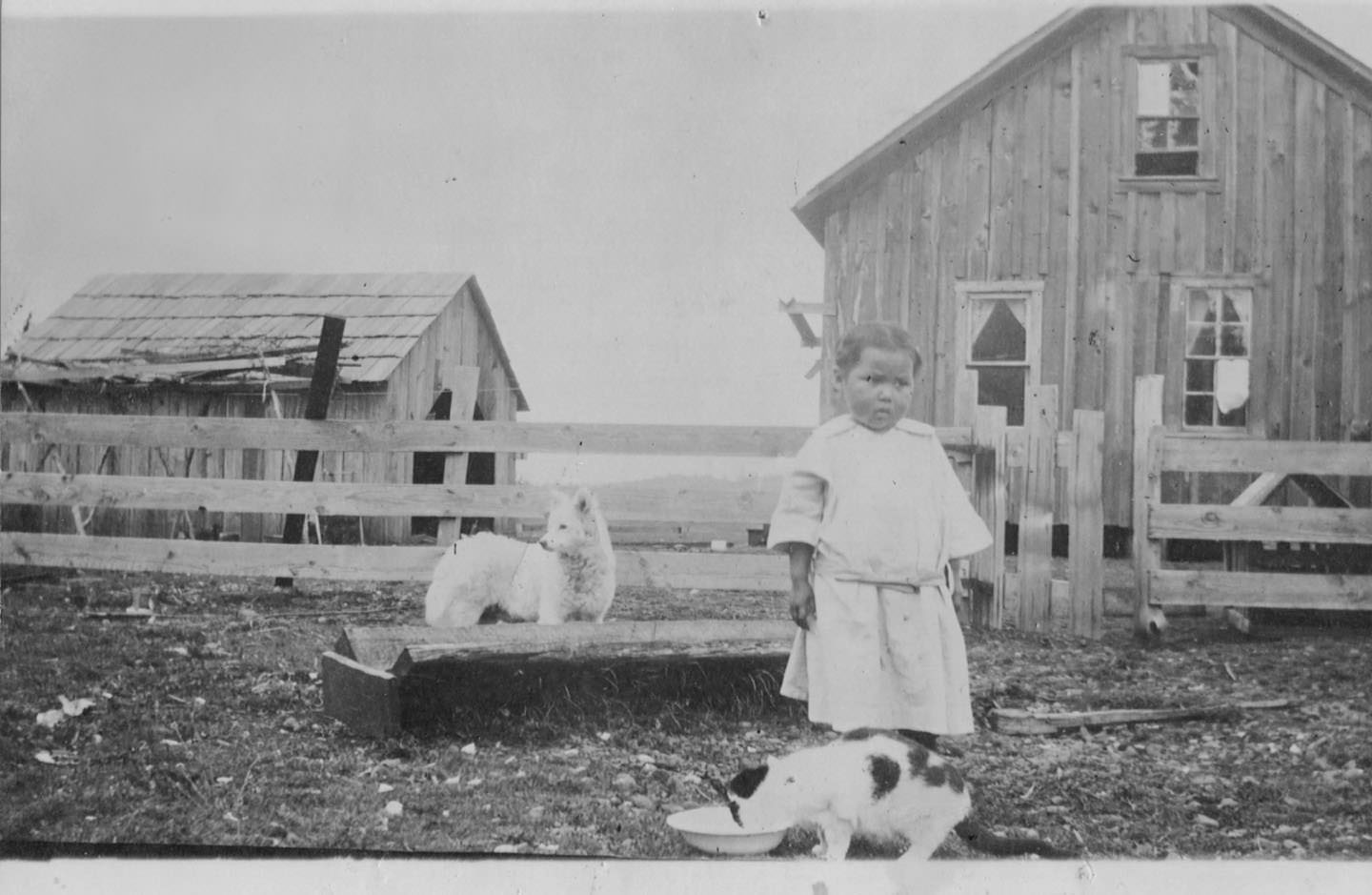
Little girl with cat and possible woolly dog. Tulalip, Washington. Ca. 1900s. Photo courtesy of Hilbub Cultural Center Collection.
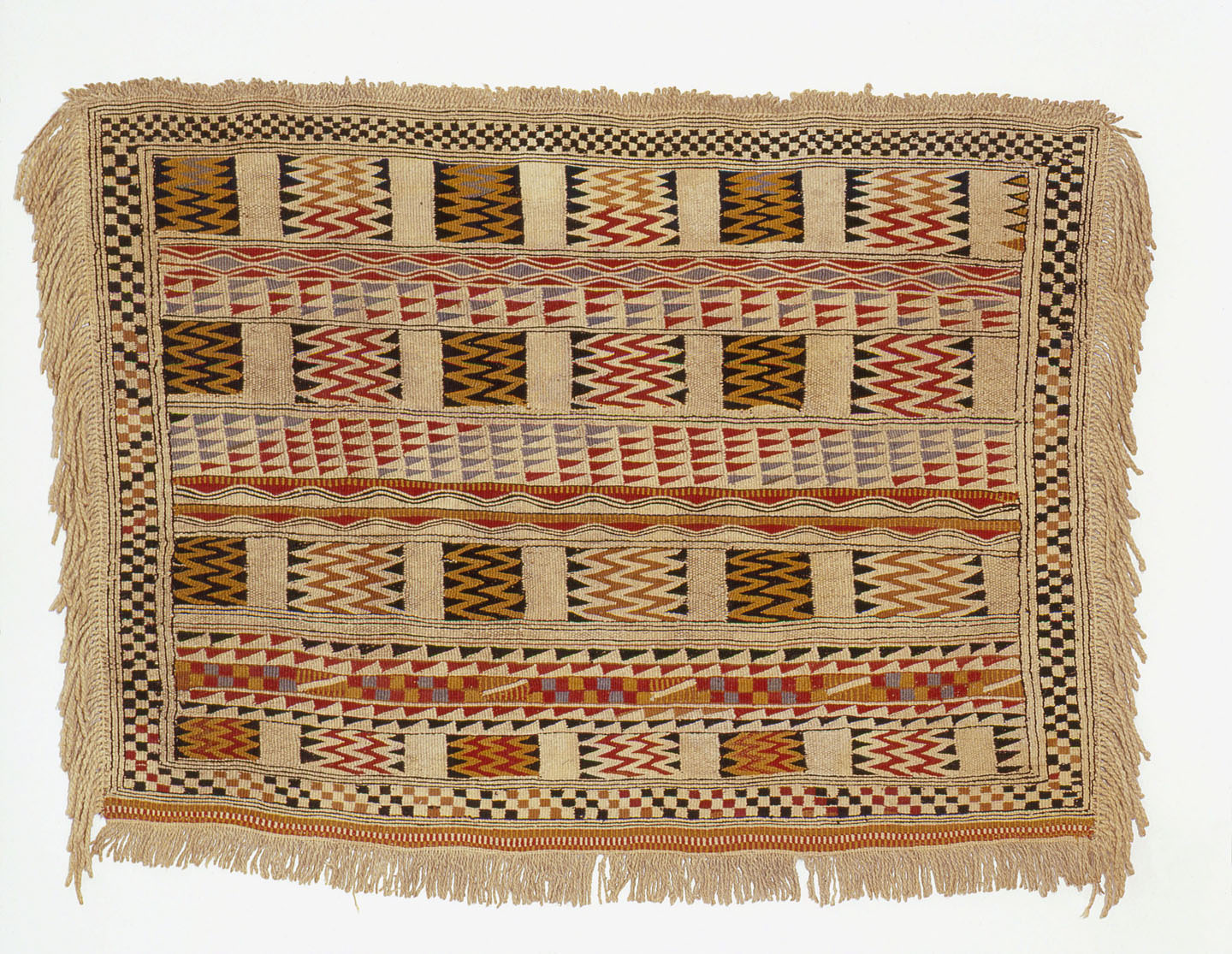
Salish Blanket, collected pre-1828. Photo courtesy of the National Museum of Finland, Etholén Collection, Catalog Number (SIGNUM) VK1.
In the early 2000s, Candace was volunteering one day a week as a research assistant at the Washington State Archives. “When the gals from the Genealogy Society came in and were copying early marriage certificates, they kept saying, ‘Who are these women?’” Candace wondered, “Why is it that we know about the men, but we don’t know anything about the women?”
When Candace found a list of “mixed marriages” in an old historical file, she resolved to find out about some of these unacknowledged women. What started out, in her mind, as a quick project resulted in more than twenty years of research. At last count she has written three books, the first two on the lives of eight Indigenous women on her list who married some of the first settlers in northwest Washington State. She can no longer call herself “just a housewife and volunteer”—she is a respected historian and author.
Candace couldn’t find much information on the women, so she researched their husbands to find out more about their wives. Like a dog with a bone, she tracked everything down that she could find.
One of the women she chose to research was Cecelia Chehaynuk, the daughter of the salmon trade lead middleman on the Fraser River with the Hudson’s Bay Company (HBC) and wife of Dr. Caleb Burwell Rowan Kennerly. Cecelia was a woman from the village near Camp Semiahmoo, the headquarters of the US Northwest Boundary Survey (NWBS) Commission, where Kennerly was employed. Kennerly, twenty-eight years old when he started with the NWBS, was based at Semiahmoo, the present-day border crossing town of Blaine in Washington State, for most of three years. During his time here he met Cecelia Chehaynuk; the two were married by local custom and soon had a son. Their descendants are prominent in the Lummi Nation reserve just north of Bellingham on the Lummi Peninsula.
Kennerly, who was from Virginia, had been a student under Spencer Baird at Dickinson College. Baird became the Smithsonian’s first curator and, at the time of the NWBS, its assistant secretary. They were both passionate about birds and nature. In 1857, Baird arranged for Kennerly to go west and act as a medical doctor and naturalist on the American NWBS team, tasked with accurately surveying and marking the 49th parallel border. When he wasn’t doctoring, Kennerly was sending natural history specimens back to Baird at the National Museum (as the Smithsonian was then known). It was an adventurer’s dream job, being paid to do the things he loved: exploring, discovering new species and building a natural history museum.
Kennerly corresponded with Baird on his activities until Kennerly’s untimely death in 1861.
If Candace wanted to learn anything about Cecelia, who had married Kennerly, she needed to read all of Kennerly’s correspondence for mentions of his wife or their life together. So she headed to Washington and the Smithsonian archives, where she copied everything Kennerly wrote, and brought copies home to transcribe. Unluckily for her, little of this had anything to do with Cecelia. Yet there was one passage that caught Candace’s attention in passing.
In a letter dated August 19, 1859, a frustrated Kennerly wrote to Baird:
We got another splendid [mountain] goat skin which was sent to Camp Skagit where Mr. Gibbs happened to be & he took charge of it; but most unfortunately his famous Indian dog “Mutton” got at it and ate the head off. He sent it to me yesterday & when I opened the bag & saw the injury I could almost have cried. Mutton was sheared a short time ago, & as soon as his hair grows out we will make a specimen of him.
Months later, Candace came across a paper written by University of Victoria archaeologist Susan Crockford, who reviewed thousands of ancient dog bones. Crockford hypothesized, using bone sizes and formulas, that two breeds of dogs existed in the Georgia Strait/Puget Sound area—a larger village or hunting dog, and a smaller dog, bred for its long wool-like hair.
In 1997 Crockford had noted that as far as was known, there were not any Woolly Dog specimens in any museum collections.
“But there is a Woolly Dog specimen! It said so in that letter I read.”
“Gosh, it’s like I made a scientific discovery, instead of all the experts. And I’m just a housewife writing a book!”
In 2002, after 142 years, Mutton was found in perfect condition in drawer #4.
This is where Suzanne Peurach and I now stood, ten years later.
Suzanne puts her hand on the drawer, pauses, looks at me and grins. After being so compelled to find out more about Woolly Dogs, I’m about to see and touch one—the only one.
Read more from our Summer 2025 issue.

